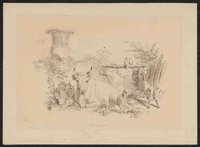
"Vulcan (Latin: Volcānus [wɔɫˈkaːnʊs] or Vulcānus [wʊɫˈkaːnʊs]) is the god of fire including the fire of volcanoes, deserts, metalworking, and the forge in ancient Roman religion and myth. He is often depicted with a blacksmith´s hammer. The Vulcanalia was the annual festival held August 23 in his honor. His Greek counterpart is Hephaestus, the god of fire and smithery. In Etruscan religion, he is identified with Sethlans.
Vulcan belongs to the most ancient stage of Roman religion: Varro, the ancient Roman scholar and writer, citing the Annales Maximi, records that king Titus Tatius dedicated altars to a series of deities including Vulcan." - (en.wikipedia.org 16.11.2019)





